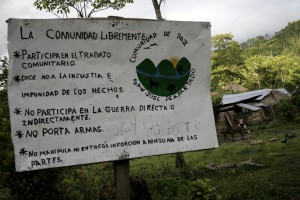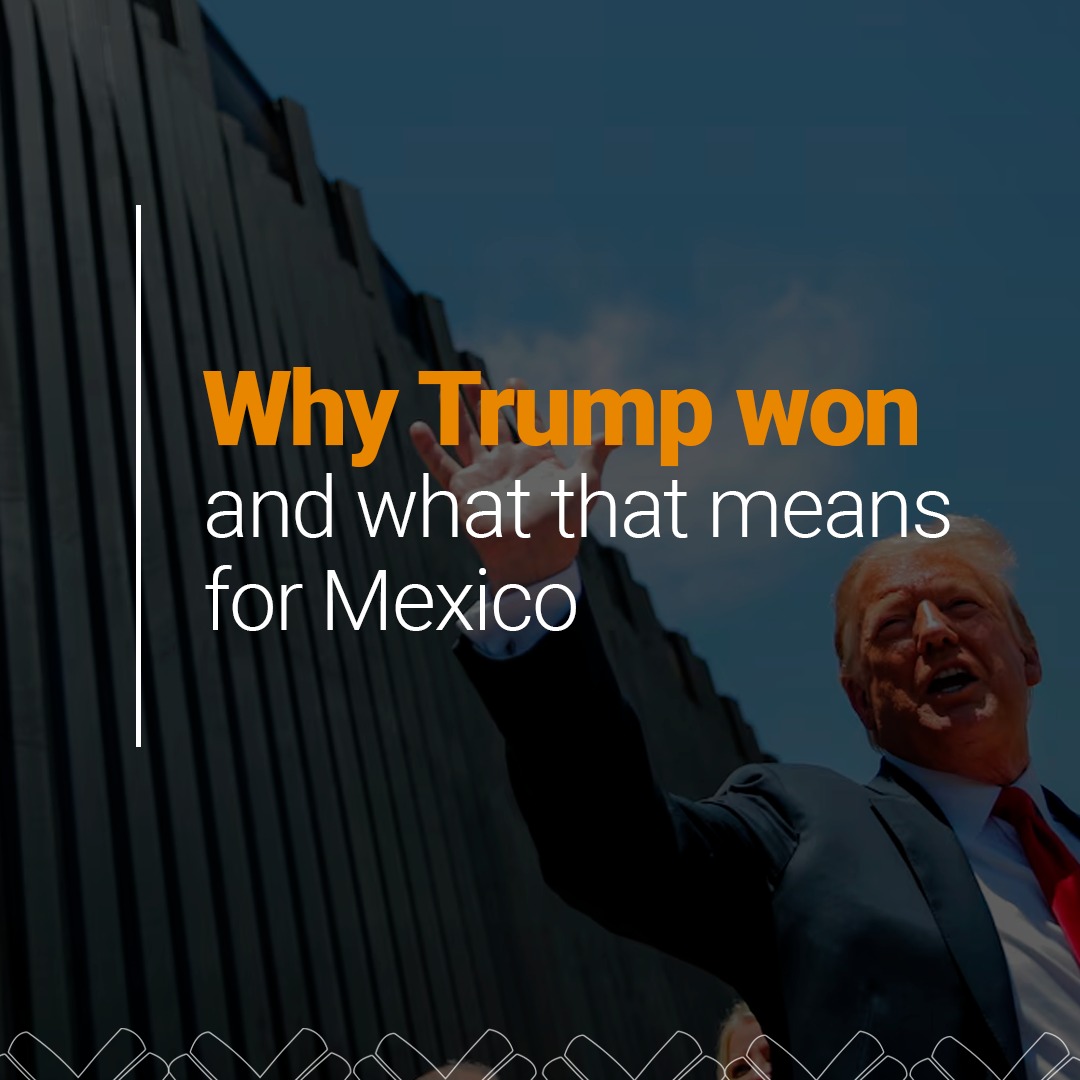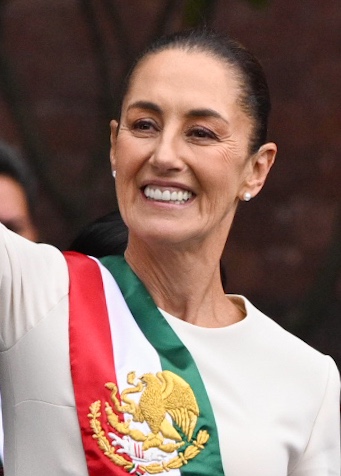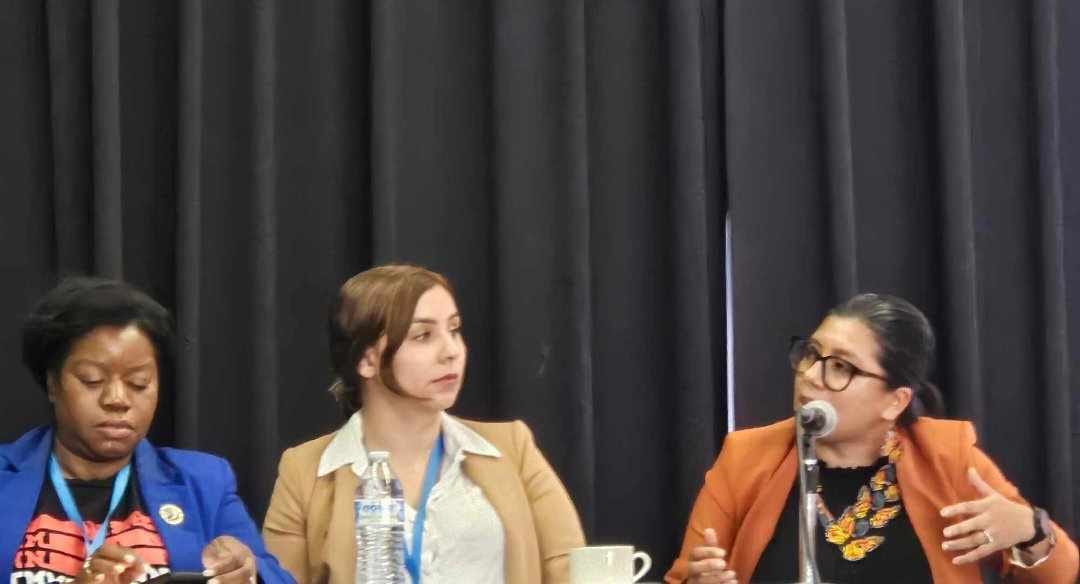
Heaven and hell are reversed, traveling to the edge of the abyss, they transform into their opposite: an atrocious war with a community of peace; desperation with hope; life and death dance in an impossible trance. This is Colombia. Where peasants tired of war take refuge in peace in order to continue living. This is the story of a visit to the community from the perspective of a supportive photographer.
“The peace community of San José of Apartadó, together with others inspired by the same vision, is a remarkable demonstration of courage, resiliency and dedication to the high values of peace and justice, in an environment of brutality and destruction. There is no better symbol of non-violent struggle, and of hope, in a world tortured by violence and repression,” wrote Noam Chomsky to the Uruguayan photographer Augustín Fernández Gabard when he returned from Colombia where he spent a month in the region devastated by the violence.
“There were several reasons to go. Principally, it is about a group of people who have sustained an alternative way of life for fourteen years, in the midst of deadly conflict, ” explains the photographer of 28 years. “The existence of the peace community complicates the conflict, since on the one hand they speak of “drug guerrillas’ and on the other of “revolution”, and everyone knows that all sides have things in common; all are violent, all live on drug trafficking. There are families that have a member in FARC and another in the army or the paramilitary, and that makes human relationships much more complex. This is the case for Samir, a former guerrilla with FARC, now demobilized, who works for the army. When he was a guerrilla, he accused the community of collaborating with the army, and now that he is a soldier, he accuses them of supporting the guerrillas. That schizophrenia causes war”.
While Chomsky wrote of his admiration for the peace community, the paramilitaries threatened and murdered. On November 30th, in the Playa Larga district, the paramilitaries told the community that they should leave the area or they would be killed. On November 21st, Yuly Pérez Durango was murdered and the paramilitaries said that anyone else who did not submit to their rules would be murdered. The paramilitaries took up permanent residence in the adjacent districts, including several in the Peace Community, collaborating with the police force.
The unusual experience of the Peace Community, San José of Apartadó, has become an unavoidable reference for pacifists as much as for those who have made ethics the reason for their political activism. Barely 1,500 people, they live in six districts (‘veredas’) or rural communities, surrounded by soldiers, paramilitaries and guerrillas. Over the last fourteen years, these armed factions have murdered 180 community residents, 12 percent of the peace community’s members. Every family has carried several coffins on their backs.
Clinging to the Land
“The community of San José was first founded by peasants who originated from several districts. After the massacre on February 21, 2005 they left the area and founded San Josecito,” explains Augustín. That day eight people were murdered, including their leader, Luis Eduardo Guerra, his wife, and their 11-year old son. That same day another leader, Alfonso Tuberquia, was murdered, along with his wife, their 6-year old daughter and their 18-month old son. All were beaten to death. The massacre occurred days after the president, Alvaro Uribe, stated that the leaders of San José of Apartadó were linked to the FARC rebels.
In the investigations that followed, the District attorney”s office linked 84 soldiers to the massacre, attributed to the paramilitary group Autodefensas Unidas de Colombia (AUC). In February 2005 the Interamerican Court on Human Rights ruled that Colombia must protect the community of Apartadó and asked that the names of the soldiers that participated in the massacre be revealed. In 2008, Guillermo Armando Gordillo, the captain of the army, acknowledged the participation of soldiers in the act, as the newspaper El Tiempo reported at the time.
“The police built an enormous camp at San José, larger than the town itself,” Augustín says. The gigantic barracks was the decision of the president, Alvaro Uribe, who ordered the police to install themselves in the town, moving the community a kilometre away, where they founded San Josecito, and forcing them to abandon everything that they had built over nearly a decade.
The municipality of Apartadó (“river of bananas” in the indigenous language of the area), in the north of the department of Antioquia near the border with Panama, has some 150 thousand inhabitants and was initially populated due to political persecution suffered by liberals after 1948, following the murder of their leader, Jorge Eliécer Gaitán. Perhaps for that reason, people of African descent, indigenous, and “paisas” (short for “paisano”, or compatriot, as they are called among those born in Antioquia) flowed into this Caribbean area where extensive banana and cocoa plantations merge with the green of the jungle.
Twelve kilometres from the provincial capital, Apartadó, a small population called San José was built, settled by those who had been displaced from other areas. It is a strategic zone at the foot of the Abibe mountain range, a corridor between the departments of Córdoba, Chocó and Antioquia where various armed groups fight for control. San José had three thousand inhabitants before war, threats and mass murder forced half of the population to move to urban areas and abandon the lands that the armed factions so covet.
In the 1980s, the Unión Patriótica (Patriotic Union) appeared, linked to the Communist Party, through which peasants were able to achieve “the construction of schools and health posts; there were professors, development for the districts, improvements to neighborhood roads,” as the community handbook states. Nevertheless, “the regional authorities encouraged the guerrillas and committed abuses and murders, stepping over the peasants’ autonomy .” The army, for its part, “entered [the community] to strike a population which they considered sympathetic to the guerrillas.”
By March 1997, a process was beginning, prompted by activists associated with the church, which permitted the people of 17 districts to form the Peace Community “in an area abandoned by the State,” as they characterize it. In reaction to two massacres, in September 1996 and February 1997, residents left the urban zone of San José.
The second massacre, in 1997, was committed by former EPL guerrillas who had been reintegrated into society through the peace process; they called all the settlers to the plaza and threatened them and then “they tied up several people who, the next day, were found dead on the highway to Apartadó.” The paramilitaries were in control. They installed blockades on the highway, where “they looked over lists and documents and murdered anyone whose name appeared.” They gave residents three days to abandon their lands, while helicopters monitored their movements. “Those of us who could leave relocated to the settlement of San José and from there we began to resist,” they relate in the “official” history of the community.
The Diocese of Apartadó proposed workshops through which the peasants could declare themselves neutral. Some 500 signed a declaration in 1997 and, little by little, they were joined by other peasants from various districts who did not want to wander, displaced from their houses, nor live on state charity. The first steps were more than hard: at night, the few that had not abandoned their homes climbed into the hills to sleep. They returned to their communities in small groups, like the 50 families that returned in March 1998 to the La Unión district. At first they worked in small groups of seven to ten peasants in order to feel protected, but within a few months hundreds of neighbors were working together in the fields.
Rifle or Robe
“On Sunday April 4, 1999, at 11 o”clock at night, ten heavily armed men, including paramilitaries known to be active in the area, entered the settlement of San José, walked through the streets insulting residents and, arriving at the house of Aníbal Jiménez, member of the Internal Counsel of the peace community, educator, artist and writer of the community anthem, murdered him in front of his small children.”
This is a fragment of the book Fusil o toga, toga y fusil (Rifle or Robe, Robe and Rifle), written by a Jesuit priest, Javier Giraldo, that describes 13 years of crimes against the peace community of San José of Apartadó (Antioquia). According to Giraldo, a noted defender of human rights, his motivation to document these facts was to act against the culture of impunity. “One has but to read any page of the book to see the abuses that are committed on a weekly basis against the community: massacres, extrajudicial executions, forced disappearances, sexual abuse, burning of houses, bombings, massive displacements, robbery of livestock, the destruction of crops,” recounts Father Giraldo.
The peace community of San José of Apartadó was a suggestion of the archbishop of Cali, Monseigneur Isaías Duarte Cancino. Giraldo relates that Monseigneur Duarte presented the idea to the inhabitants of the zone so that “they did not displace more rural peasants or lose their land, since they were in a war zone, they declared themselves a community of peace and claimed the rights of the civil population in the middle of an armed conflict.” For the Jesuit priest, the cause of violence against the community of San José is their decision to stay out of the conflict. “I believe that the country will realize this and seek a solution. For that reason we deliver the book to judges, journalists and congresspersons, since even Colombians do not know all these facts,” he says.
Money earned through the sale of copies of the book will fund the construction of the Monument Park to the Memory of the Victims of the Peace Community of San José of Apartadó.
Everyday Life
“Jungle and mountain, humidity, sticky clothes, earth and more earth, one is constantly climbing and descending,” recalls Augustín, with half-closed eyes. “It rains every day, the streams rise and become impossible to cross and communication becomes a problem. Apartadó is a full city of paramilitaries, desde la que salen las chivas hasta San José.”
“I wrote them a proposal offering them a course in digital photography so that they could improve the community web page, because there are few photographic images of all that they have accomplished and how they have spent these years. I brought them cameras so that they had tools to work with, and I stayed a month,” explains Augustín.
The community is governed by a series of principles summarized in a Declaration and an Internal Regulation: to not participate directly or indirectly in the hostilities, to not carry weapons or explosives, to not offer support to any of the sides in the conflict, to abstain from helping the armed factions solve internal, personal or family problems, and to promise to participate in community works.
Everyday life is regulated by an Internal Counsel comprised of seven members chosen by the community, a member of a national NGO and a member of the Diocese of nbso online casino reviews Apartadó. More than 55 working groups allow them to build schools and bring in teachers, and to grow community crops that maintain the dining room and the preschool, where all the community children eat free. The crops grown on communal lands are distributed among the families and they use what is left over to buy tools and supplies.
Through community work they built and maintain the roads, four fish tanks, and five sheds, they revived cocoa and banana crops, and grow fruit trees as an alternative crop for making jams and pulps. They work on communal projects, such as home improvements, rice, corn, and sugar cane threshing, cane milling and building aqueducts. All of this has allowed them to survive three month long blockades by paramilitaries who are allied with the soldiers, during which time they cannot leave their districts.
“Every eight days we have meetings and every fifteen, work training days.” They built the Aníbal Jiménez Training Centre (named after a community leader murdered in 1999) in San José, with two floors that housed 50 students, though they were forced to abandon it due to pressure from the armed factions. “Before the forced displacement in April 2005, the Centre had 27 students studying degree programs, 25 women who met three times a week for dressmaking, and 55 coordinators who met each week to discuss solutions for the community,” the peace community handbook proudly states.
In addition, they built a health center, a community warehouse, and a park, all the fruits of community debate, discussion and reflection. A group of 50 women built hen houses and cultivate gardens near their houses. The youth started a community radio station. Since 2006 they have sought a training space in which to teach practice and theory, with the idea to share knowledge just as Guerra, their leader who was murdered in the last massacre, wanted. They call it Campesina University, born out of the Network of Communities of Resistance, a group of rural, indigenous, and black communities that also reject the war.
Of everything that they have accomplished, they believe that the greatest achievement of the Peace Community has been a return to the land, something that they did without the support of the State, “in order to win space away from the war and to face the armed factions in the districts.” Through many years and much pain, they have learned that the main objective of the war, much more than defeating the supposed enemy, is to take away land from the peasants, the real treasure in the conflict. Over twenty years, the paramilitaries, cattle ranchers, and businessmen have appropriated more than five million hectares of rural land.
“The workshop was to learn to handle the cameras. The council chose the people who participated. First I gave them a lesson on how the cameras work, and then I told them to go out and take pictures. At night we met in one of the houses to look at the images so that they could learn how to edit photos,” explains Augustín. For its part, the University had its first conference in the Peace Community of San José of Apartadó, in the Arenas Alta district, in August 2004. Their best-functioning project is the organic seed bank.
Macondo, always Macondo
The people are very poor, says Augustín, but they eat well because they have never lost contact with the land. “You wear rubber boots covered in mud, and in time, those same boots are trimmed and become sandals;” they have a culture of manual labour that is capable of putting everything to good use.
“Thursdays are for community work, in which everyone participates, from the children to the elderly. They cut cane, harvest, and collect and dry cocoa. The internal organization of the work is based on district assemblies and an internal counsel, but above all else, a general assembly of all the districts”, Augustín states, emphasizing the happiness that emanates from everything they do. “The only time you see them tense is when they have to go to the city, due to the danger that the road – where there have been many murders – represents. It is a death sentence if you are caught by a group of paramilitaries,” he says.
Despite a permanent group of European, American, and international missions in the area, violence against the peace community has not diminished. The zone is again militarized. “The peasants told me that the paramilitaries abducted a rancher to use during negotiations with the guerrillas. They will exchange him for money or drugs. Incredible!”. Not only that: they also spoke of an army lieutenant who buys cocaine from the guerillas, yet a short while later they resume fighting. They say that, in Colombia, truth is stranger than fiction.
“The most difficult thing for me to understand was that after they massacred your family, you do not seek revenge by joining the guerrillas or the paramilitaries. Remaining outside of the war in that situation is a logic that seems very contradictory to everything I know. Especially when every family has one or more dead. Yet I did not perceive resentment or rage,” Augustín says.
“There is bitterness, although they speak with a certain naturalness about the dead and the atrocities, like in the case of Mrs. Brígida, whose 15-year old daughter was murdered. Others told me that they had seen the paramilitaries dismember a boy and play soccer with his head. How can life go on after that?”
– What is it that keeps the community united? What allows them to endure and continue?
– (Thinking a while) In truth, I have no idea. Perhaps it is a “freedom instinct,” like Chomsky speaks of. He says that “if you assume that there is no hope, you guarantee that there will be no hope. If you assume that there is an instinct toward freedom, that there are opportunities to change things, then there is a possibility that you can contribute for making a better world. That is your alternative.”
Raúl Zibechi is an international analyst for Brecha of Montevideo, Uruguay, lecturer and researcher on social movements at the Multiversidad Franciscana de América Latina, and adviser to several social groups. He writes a monthly column for the Americas Program (www.americas.org).
Editor: Laura Carlsen
Translator: Erin Jonasson
References
“Roads of Resistance” (“Caminos de Resistencia”), Peace Community/Oxfam, Bogotá.
Website of the Peace Community of San José of Apartadó, www.cdpsanjose.org
Javier Giraldo, “Rifle or Robe, Robe and Rifle” (“Fusil o toga, toga y fusil”), CINEP, Bogotá, 2010.
“Justice and Peace” (“Justicia y Paz”), human rights magazine, Intercongregational Commission on Justice and Peace, Bogotá, No. 8, April-June 1998.
Interview with Agustín Fernández Gabard, Montevideo, November 17th, 2010.



